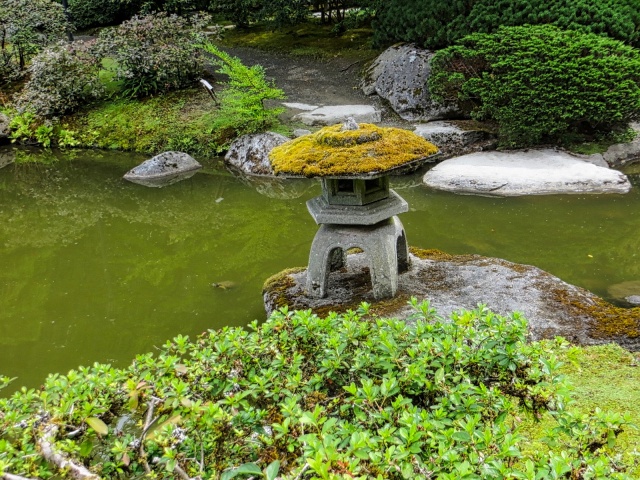Mosses are small flowerless plants that typically grow in dense green clumps or mats, often in damp or shady locations. The individual plants are usually composed of simple leaves that are generally only one-cell thick, attached to a stem that may be branched or unbranched and has only a limited role in conducting water and nutrients.
Mosses are now classified on their own as the division Bryophyta. There are approximately 12,000 species (per Wikipedia, other sources state the range from 10-20K) but this blog is about a few most prevalent in the Seattle Japanese Garden.
Here is an easy to understand mosses and liverworts tutorial with close-up images, courtesy of US Forest Service, Alaska Region – it contains description and pictures of most of the mosses living in SJG.
Seattle Japanese Garden is a public, 3 1/2 acre formal garden, located in the south end of Washington Park Arboretum; the physical address is 1075 Lake Washington Blvd E, Seattle WA 98112 (2 blocs North of Madison & Lake Washington Blvd E. crossing).

SJG • 8/2/2016 – Moss covered yukimidoro lantern
• • • • •
If you want to read more about mosses in general, go to in-depth wikipedia page, that has info on their physical characteristics, classification, history, habitat and cultivation.
Go to Moss Musings for info on moss naming conventions and taxonomy: […] In the world of bryology, only a handful of the 15,000* mosses have a common name, a few of which can be found at World of Mosses and Mosses, Lichens, and Liverworts of the Northwoods – Species Index.
Mosses are referred to by their Latin names at the genus and species level (a binomial). The bryologist or scientist who first describes the genus or species gets to names it. There are instances, as with Bryoandersonia illecebra, in which the person naming the moss honored someone, in this case bryologist Lewis Anderson, but had to “Latinize” his name to fit conventions. […]
Encyclopaedia Britannica offers this: […] Moss (division Bryophyta), any of at least 12,000 species of small nonvascular spore-bearing land plants. Mosses are distributed throughout the world except in salt water and are commonly found in moist shady locations. They are best known for those species that carpet woodland and forest floors. Ecologically, mosses break down exposed substrata, releasing nutrients for the use of more complex plants that succeed them. They also aid in soil erosion control by providing surface cover and absorbing water, and they are important in the nutrient and water economy of some vegetation types. […]
I haven’t find yet a taxonomy of mosses that can be easily understood at a glance, but this pictorial guide from naturespot.org.uk provides some useful instruction to the world of mosses and liverworts – it’s a collection recorded by the NatureSpot members, with sub-links for more info.

